The Truth About Animals
Lucy Cooke, Zoologist
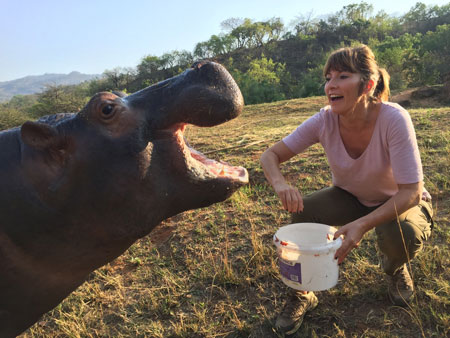 Zoologist Lucy Cooke explains that humans aren't doing animals any favors when we moralize their behavior. Humans have gone to the moon and split the atom, but when it comes to understanding animals, we've still got a long way to go. So you've probably never considered if moose get drunk, penguins cheat on their mates, or worker ants lay about. They do - and that's just for starters.
Zoologist Lucy Cooke explains that humans aren't doing animals any favors when we moralize their behavior. Humans have gone to the moon and split the atom, but when it comes to understanding animals, we've still got a long way to go. So you've probably never considered if moose get drunk, penguins cheat on their mates, or worker ants lay about. They do - and that's just for starters.
The study of animals is a fascinating subject, but it's really hard to figure out what's going on. Animals do not give up their secrets easily. Over the years we've tried our hardest to understand animals with some success, but a lot of failure as well. Lucy tells us she will never really know what her own dog is thinking. She can only guess.
People have a tendency to anthropomorphize their animals a little too much. We are hardwired to feel lovingly toward animals that have baby like features. So animals that are cute, we are very much in favor of, and we look at them in a very favorable way. We like animals that look like us. We tend to think favorably of animals that have forward facing eyes and human like faces. Especially with those sorts of animals, there is a huge tendency to anthropomorphize, which can lead to sources of some unfortunate misconceptions about certain creatures.
People say we can learn a lot about dogs. They're the best. They're really honest and true. But there are dogs that will steal from other dogs when they aren't looking. So are there bad animals in this world? The answer to this is that animals don't follow a Christian moral code. Survival is a brutal sport and it means that some animals have to take life strategies that would not be appropriate if you were a human. So deception is rife in the animal kingdom.
Penguins are one creature that everybody thinks are so cute and adorable cause they wobble along on two legs. One of the greatest myths out there is that penguins are monogamous. They are actually pathologically unpleasant necrophiliacs, according to Lucy. In fact, very few birds are monogamous. Most birds are wildly promiscuous, both the males and the females.
 For years, there was a whole thing about birds where people assumed that they were monogamous because you'd see two birds and they'd look like they were a caring loving couple that were building a nest and raising their chicks. But then paternity tests came along and somebody decided to paternity test eggs in a nest. They found out that two or more males often sired the eggs. So there's a very big difference in the bird world between social monogamy and sexual monogamy. Lots of birds are socially monogamous, in that they form a pair bond, but then they're not actually sexually monogamous. They will have sex with other partners
For years, there was a whole thing about birds where people assumed that they were monogamous because you'd see two birds and they'd look like they were a caring loving couple that were building a nest and raising their chicks. But then paternity tests came along and somebody decided to paternity test eggs in a nest. They found out that two or more males often sired the eggs. So there's a very big difference in the bird world between social monogamy and sexual monogamy. Lots of birds are socially monogamous, in that they form a pair bond, but then they're not actually sexually monogamous. They will have sex with other partners
What about worker ants? They all look all so busy. Is there such a thing as lazy worker ants? Absolutely, according to Lucy. It was recently discovered that around 15-percent of worker ants are basically lazing around doing nothing. We have a tendency to anthropomorphize, but we also have a tendency to judge animals by our own moral standards. We look down upon animals that are being lazy. So it made big news when it was discovered that a lot of worker ants were lazy and not doing anything. But that's beneficial to their society.
The sloth is another example of an animal that's incredibly lazy and has a very bad reputation for being lazy. But actually sloths are incredibly successful animals. They've been around on this planet in one shape or another for 40 million years and they are incredibly prolific. They're doing very well for a mammal of their size, despite the fact that we're chopping down their forest at an alarming rate. So rather than calling sloths lazy, we should be calling them frugal. They are basically energy saving icons. This is something Lucy feels everyone should be aspiring to.
 Another animal Lucy studied was the hippo. She thinks hippos are great and her research had a lot to do with the hippos she visited in Colombia. A man named Pablo Escobar had a private zoo and he imported all sorts of animals. When he was killed, all of his animals were sent off to zoos all around South America, except for the hippos. This is because when you weigh the same as a family car, you become quite difficult to relocate. These hippos have now gone wild and are now running around in rural Columbia. They are basically breeding like rabbits. Pablo originally brought over three and now there are around 60. They have become this sort of real menace. The local Colombian farmers are not used to animals the size of a hippo and nobody realizes just how dangerous they are. Lucy spoke to one small child who said that a randy rogue male had chased his grandmother for an hour only a few nights before.
Another animal Lucy studied was the hippo. She thinks hippos are great and her research had a lot to do with the hippos she visited in Colombia. A man named Pablo Escobar had a private zoo and he imported all sorts of animals. When he was killed, all of his animals were sent off to zoos all around South America, except for the hippos. This is because when you weigh the same as a family car, you become quite difficult to relocate. These hippos have now gone wild and are now running around in rural Columbia. They are basically breeding like rabbits. Pablo originally brought over three and now there are around 60. They have become this sort of real menace. The local Colombian farmers are not used to animals the size of a hippo and nobody realizes just how dangerous they are. Lucy spoke to one small child who said that a randy rogue male had chased his grandmother for an hour only a few nights before.
Are you ready to learn the truth about Pandas? Lucy says that everybody thinks that they're rubbish at sex and that they can't procreate. They are sort of evolutionary redundant and they need our help. She claims that this is absolutely not the case in the wild. In fact, one pair in the wild we're observed mating 40 times in the space of an afternoon. So that's not an animal that doesn't know what it's doing. Their low birth rate has evolved in order to keep the population in check so that they don't outgrow their food source, which is bamboo. So if you take an animal out of the wild and you observe it in captivity, it's really a very different animal. Pandas don't reproduce well in zoos, but then humans probably wouldn't reproduce terribly well if they were put in a zoo cage with another human and expect to just get on with it.
Lucy has done a lot of research about wildlife, but not our domesticated animals like cats and dogs. In fact, she says she is deeply suspicious of cats. She feels they can't be trusted. They've somehow got us in to their spell and are secretly running the world. But when it comes to dogs, she loves them and is a real softie around dogs. She has thought about doing a book about dogs down the line actually, because she's sure there are loads of misconceptions about them as well.
Visit Website
CBD's, Vaccines and Raw Diets
Dr. Judy Morgan, DVM, CVA, CVCP, CVFT
 Holistic Veterinarian Dr. Judy Morgan takes the most controversial topics head on in the pet world and shares her experiences with CBD's, her views on vaccines and the raw diet she feeds her own dogs. Dr. Morgan also has an integrative approach combining holistic medicine with traditional Western techniques
Holistic Veterinarian Dr. Judy Morgan takes the most controversial topics head on in the pet world and shares her experiences with CBD's, her views on vaccines and the raw diet she feeds her own dogs. Dr. Morgan also has an integrative approach combining holistic medicine with traditional Western techniques
Dr. Judy Morgan is a veterinarian certified in acupuncture food therapy and chiropractic care. She has spent a lot of her time working with Cavalier King Charles Spaniel and English Toy Spaniel rescue groups. She's also the Chief Veterinary Medical Officer for Monkeys House, a dog hospice and senior sanctuary. On top of this, she is a well-known author of many books, including Yin & Yang Nutrition for Dogs.
Being a holistic veterinarian, Dr. Morgan says she has an integrated approach when it comes to veterinary care. While she doesn't shun all medications, she will grab them when she needs them, but for the most part she is looking for alternative therapies, whether that be food, herbs or even CBD's. She also uses cold laser, acupuncture and chiropractic care. She says she has a lot more tools in her toolbox that she will go to rather than jumping first into medications that might have some serious side effects.
CBD's are the new thing and Dr. Morgan thinks it is awesome stuff. She states she has a ton of patients that are using them. She also says most of her family members take it as well as all of her dogs.
CBD's are being used for many different things. Dr. Morgan just read a study that was done by Cornell where they did a double blind study with CBD's for dogs with arthritis versus using non-steroidal anti-inflammatories and the results were really pretty amazing. There was definite improvement in the pain scores on these dogs. CBD's are definitely used for pain, not just for arthritis, but pain in general. It's also been an excellent adjunct for pets with anxiety and they've also been able to use it to wean some dogs off of seizure medications.
There are so many uses for CBD's and Dr. Morgan thinks we're just hitting the tip of the iceberg, because they're really just starting to do the research on it.
CBD's don't have any side affects if you're using a high quality product. However, one of the biggest problems right now is figuring out who makes it pure and who doesn't. There are multiple companies coming online every day. This makes it a little difficult for the average consumer to discern whether it's a good company, because everybody's going to tell you that they're the best.
You need to make sure that you are using full spectrum CBD's for your pets and it has to have less than 0.3-percent THC, which is the psychoactive ingredient in marijuana. It's not coming from marijuana plants, it's coming from the hemp plant and it has to be the whole plant extract. As long as your THC is not high, you really can go pretty high on your dose without getting side effects. If the THC is higher in there, then you definitely could have some toxicity. Lower doses are used for dogs that have kidney problems. If a dog has liver problems, the dose might also be backed off a little bit. Other than that, there is really not much in the way of side effects. Dr. Morgan has seen people give 10 times the normal dose and their dogs are just fine.
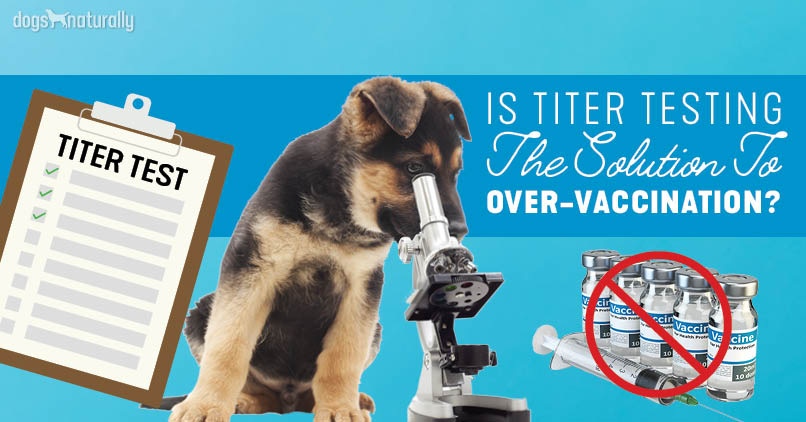 Most people don't know that the hemp plant and the marijuana plant are two different plants. The marijuana plant has a lot more THC in it, whereas the hemp plant should not have much THC at all. They are both different species.
Most people don't know that the hemp plant and the marijuana plant are two different plants. The marijuana plant has a lot more THC in it, whereas the hemp plant should not have much THC at all. They are both different species.
Another thing that Dr. Morgan deals with are vaccinations and there seems to be a lot of controversy about them. Obviously there are certain vaccinations that our animals need, but the anti-vaxxers are standing up and refusing to vaccinate their pets and children, so we're seeing a reoccurrence of distemper in dogs and measles in humans.
Should we still be doing these vaccines? Dr. Morgan claims she is no anti-vaxxer, but is a judicious vaxxer. She tells us that when she was in vet school back in the 80's, there wasn't a vaccination for Parvo. As a result, they had isolation wards full of dogs that were dying of the Parvovirus. When the Parvo vaccine came out, they were able to save literally hundreds of thousands of lives. So it became very important.
The problem was that all vets felt it was just easier to vaccinate every year. But what they didn't realize is that those vaccines may last a lifetime. Currently, a puppy will get a couple of vaccines and then we will start doing blood titers. A blood titer is a blood test that you can take that tells you whether your pet has circulating antibodies against a disease. If they have the antibodies, they don't need new vaccines. So it makes a lot more sense to judiciously vaccinate and to know that they're protected. If they're not protected, you can give them only what they're missing.
A rabies vaccination is required by law once a dog is over a year old and has been previously vaccinated. Many dogs can build up their antibodies for rabies where they don't need to be re-vaccinated but we have to give it to them anyway.
Dr. Morgan explains that both her dog and her technician's cat have not been vaccinated for about 10 years. A protective titer is 0.5. Dr. Morgan's dog came up at 14.5 and her technician's cat came up at 11.5. This was 10 years after the vaccine was given. So while you can do the titers for rabies vaccinations, unfortunately because of the legalities that most townships or states have that won't accept this, pet parents are forced to do the vaccines.
When it comes to food, everyone has their idea of what the best pet food diet is and Dr. Morgan tells us she is a raw feeder. Sometimes her pets will eat processed raw foods from different companies that have a raw diet already prepared, but a lot of times she grinds her own raw blends for her dogs. She also sometimes feeds them home cooked foods.
She is not worried about pathogens and bacteria in the raw food she feeds her dogs, and why should she - her dogs go out and eat road kill and it doesn't bother them. It's the nature of dogs, that's what they eat. Now with that said, the sourcing of that raw meat is very important. Be aware if you are buying factory farmed meat, which is pretty highly contaminated. Even the meat that we buy in the grocery store is pretty highly contaminated. The USDA allows that. They know that because it is assumed that you will cook it. That's why when you buy a package of hamburger, it says be sure to cook to an internal temperature of 170 degrees for however many minutes. For fun and games, just go buy a pack of chicken and get a culture swab on it, send it off for the lab and see what bacteria grow. You'll be amazed.
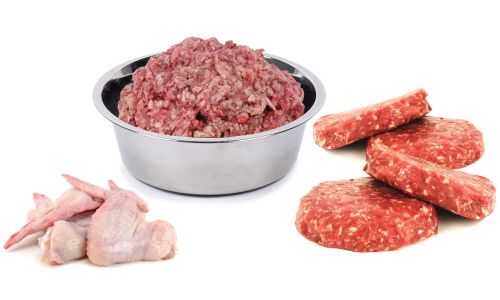 For a raw food pet diet, you want to buy grass fed, kind of organic free range where the animals are not crammed in altogether. If you've ever seen a confinement beef raising operation, those cows are shoulder-to-shoulder, elbow-to-elbow and they're standing in manure up to their knees or elbows. Everything is contaminated in that environment and we end up with very highly contaminated meat. The same goes with the factory farming for the chickens. But if you take a grass fed pasture cow, the percent of contamination in that is extremely low. The other interesting thing is that the FDA has a zero tolerance for bacteria in raw dog food. While the FDA says you can have as much bacteria in your grocery store meets as you want to, but the FDA has a zero tolerance for raw dog food. Some pet food companies are using some high-pressure pasteurization; some are using a water wash high pressure as well to take bacteria out of there. Some of them even use a fermentation process to kill the bad bacteria. So there are very safe raw foods that you can get.
For a raw food pet diet, you want to buy grass fed, kind of organic free range where the animals are not crammed in altogether. If you've ever seen a confinement beef raising operation, those cows are shoulder-to-shoulder, elbow-to-elbow and they're standing in manure up to their knees or elbows. Everything is contaminated in that environment and we end up with very highly contaminated meat. The same goes with the factory farming for the chickens. But if you take a grass fed pasture cow, the percent of contamination in that is extremely low. The other interesting thing is that the FDA has a zero tolerance for bacteria in raw dog food. While the FDA says you can have as much bacteria in your grocery store meets as you want to, but the FDA has a zero tolerance for raw dog food. Some pet food companies are using some high-pressure pasteurization; some are using a water wash high pressure as well to take bacteria out of there. Some of them even use a fermentation process to kill the bad bacteria. So there are very safe raw foods that you can get.
One of the things that Dr. Morgan feels is pretty important is that we don't feed our pets the same exact thing in their bowl meal after meal after meal. One of the reasons for that is if there is excess or a deficiency in that food, it will get magnified over time. So if you think about it, we don't eat that way. You don't eat that bowl of cheerios for breakfast and dinner every day for year after year. Constantly eating the same thing can magnify whatever is in the food over time. For example, there was a current recall with the excess vitamin D in it. Even if you're switching within a company and feed them beef and the next time you decide to buy chicken from the same company, you need to know that they use the same vitamin mineral mix across the board in their brand no matter what the flavor is. So if there's excess or a deficiency in there, which they're not testing for, it's going to get magnified in your animal over time.
Dr. Morgan recommends you to go brand hopping a little bit. You just need know your pet's digestive system and how fast you can make those changes. She tells us her dogs have something different in their bowls for every single meal. This way if there is a problem with the food, you're not magnifying that problem. People are really looking for healthy ways to feed their pets. They're looking for homemade diets they can use if a pet has kidney failure, heart failure, liver failure, or just a healthy pet that they want to make their own food for and control what ingredients are going in there.
Visit Website
 Extreme Heat Tips: Keeping Your Dog Safe When the Temperature Soars - Dr. Debbie
Extreme Heat Tips: Keeping Your Dog Safe When the Temperature Soars - Dr. Debbie
"Oh, but it's a dry heat." We've all heard that comment, used to describe the desert Southwest climate, one which becomes especially taxing on Southwest U.S. residents during July and August. The desert may lack the added humidity concerns that much of the country knows, but when temperatures escalate above 100 degrees, you can't dismiss the dangers of that infamous dry heat.
As the mercury rises, so too do the number of heat stroke cases veterinarians see. The basic reason why dogs succumb to heat stroke lies with their differing cooling mechanism. Humans sweat to dissipate heat, while dogs pant. When faced with high temperatures, high humidity, exercise or excitement, panting fails miserably at cooling dogs.
Pet owner should be observant for symptoms of heat stroke including excess panting, anxiety and thick ropy drool. As heat stroke progresses, dogs may exhibit vomiting, diarrhea, a dark to blue color of gums and collapse. Shock sets in as high temperatures damage the brain, respiratory system, kidneys, and digestive tract.
Be especially vigilant with at-risk dogs such as senior dogs, those with chronic illnesses and breeds like Pugs, Bulldogs and Boston terriers whose short face and upper airway conformation makes it more difficult cool off in high temperatures.
Here are the top 5 misconceptions about heat stroke in pets:
1. Heat stroke only occurs during peak daylight hours.
FALSE: Extreme temperatures continue to rise into the afternoon and remain a threat to pet even after dark. Dogs left outdoors in evening hours can still develop heat stroke long after the sun has set. For best safety keep pets indoors day and night during extreme heat. Limit exercise to early morning hours before sunrise, since evening temperatures are anticipated to remain high.
 2. Dogs can't get heatstroke if they are left with access to pools or shade.
2. Dogs can't get heatstroke if they are left with access to pools or shade.
FALSE: Outdoor cooling resources like doggie pools, misters, shade and ice blocks may not be enough to prevent a fatal heat stroke event. Access to these cooling means does not guarantee protection. Keep pets indoors during dangerous heat.
3. Heat stroke can be treated at home without veterinary care.
FALSE: Heat stroke is a life threatening emergency which requires appropriate intravenous and emergency veterinary care. Prompt veterinary care is important and delayed home care efforts can jeopardize survival. Plunging a pet into very cold water or ice baths will worsen a pet's odds of surviving heat stroke. Intense cold and ice causes capillaries to constrict, trapping heat in the body core and prolonging dangerous heats effects on the vital organs in the body.
4. Only dogs get heatstroke.
FALSE: Cats are less prone to heat stroke because they aren't as physically active, but elderly or chronically ill cats are less apt to recover from heat's effects. Rabbits and chinchillas are very sensitive to high temperatures, succumbing to heat stroke easily with temperatures just above 80 degrees. Caged pets like rabbits, ferrets, birds and chinchillas suffer heat stroke deaths when left home during family vacation and power outages shuts off air conditioning. Have a pet sitter check on any pets once or twice daily during summer months.
 5. It's okay to leave dogs in cars as long as you open windows wide, not just crack the windows.
5. It's okay to leave dogs in cars as long as you open windows wide, not just crack the windows.
FALSE: Never leave a dog unattended in a car during summer. Even if windows are fully open, the hot vehicle environment with little air circulation becomes a death trap for dogs. Even a few minutes in a hot car can prove dangerous.
Every second counts when a dog is faced with heat stroke. See a veterinarian immediately with any concerns of heat related illness and be especially cautious during the upcoming heat. Look out for your furry friend and keep him safe in the coming heat wave.
Featured veterinarian known as "Dr. Debbie" on national pet radio program, Animal Radio. Ebook author of "Yorkshire Terriers: How to Be Your Dog's Best Friend"; "Pugs: How to Be Your Dog's Best Friend"; "Mini Schnauzers: How to Be Your Dog's Best Friend"; and "Shih Tzu: How to Be Your Dog's Best Friend." Dr. Debbie's books.
Visit Website
Animal Radio News - Lori Brooks
 Never Buy a Pet Online
Never Buy a Pet Online
Even if you're aware of pet scams, you should never buy a pet online. A Volusia County, Florida, woman was heartbroken after she paid her hard-earned money for a dog online. She never got the pet or her money back and later found out the whole thing was a scam. The woman made two $500 payments to purchase a Samoyed puppy and to pay for the shipping, only to find out it wasn't real. She said her older dog, Cody, needed a friend and she is out $1,000. She now wants to warn everyone because these scams break your heart and your wallet. She ordered the dog online through Purebredsamoyed.com. The Better Business Bureau said the website isn't legitimate. A dog breeder of 36 years says you should never buy a pet without seeing it in person first. You should also never wire money to people or companies you don't know and always use a credit card, in case you need to dispute charges. Typically the scam companies will have you wire money and there's no way to get it back.
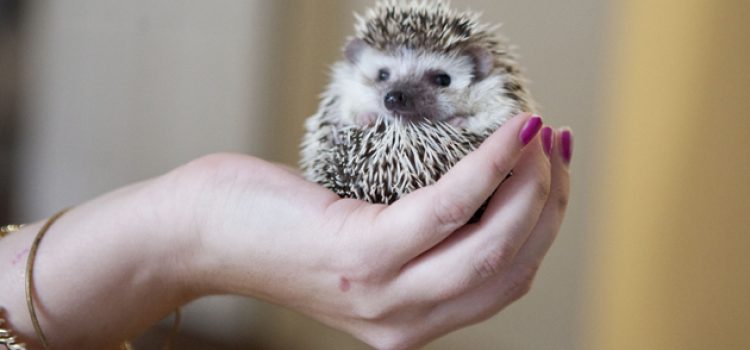 Cases of Salmonella Linked to Hedgehogs
Cases of Salmonella Linked to Hedgehogs
Many cases of salmonella linked to pet hedgehogs have been reported in the United States, according to the U.S. Centers for Disease Control and Prevention. Cases were reported in six states: California, Indiana, Kansas, Michigan, Oregon and Tennessee. Even if hedgehogs look healthy and clean, they can have salmonella in their droppings, which is easily spread to their bodies and throughout their living areas. Most people infected with salmonella develop diarrhea, fever and stomach cramps 12 to 72 hours after exposure. They're typically ill for four to seven days.
 All Is Well That Ends Well
All Is Well That Ends Well
A 5-year-old cat was missing in England for 2 weeks. Hatty the cat then turned up on the Royal Albert Bridge. A complicated 6-day, $7,500 rescue mission was launched to rescue the cat, before she simply wandered back home on her own. Still, the good news is Hatty is home and safe and her owners are vowing to make her an inside only cat.
Food Is The Biggest Expense For Most Pet Parents
The secret shopper team at Checkbook.org compared prices among a limited number of low end and mid range pet foods. They focused on 11 of the most popular brands of dog food, as well as a few brands for cats. They found a big part of the expense is where you buy; if you pick the most expensive place to purchase your pet food, you might pay 30 even 40-percent more than you would at the lowest cost place. They found the lowest prices for mass-market brands at three chain stores in Washington State. Those being WinCo, Target and Walmart. They also found that Costco has low prices for pet food, but only has its own Kirkland brands these days. For pet parents looking to save money on premium brands, they found the lowest-cost way to buy pet food is online through Chewy.com, which had lower prices than local stores. Checkbook also says Chewy.com's prices were as much as 15-percent lower than the prices they found for the same pet food on Amazon. Rounding out the top five online dog food sources in the survey were DogFoodDirect.com, Target.com, CareALotPets.com and PetSmart.com. One word of caution, when you're shopping for price, pay attention to protein levels, especially if you're considering a brand change. Checkbook found that a more expensive brand might actually be a better value than a lower-priced option that requires larger servings in order to provide all the protein your dog needs every day.
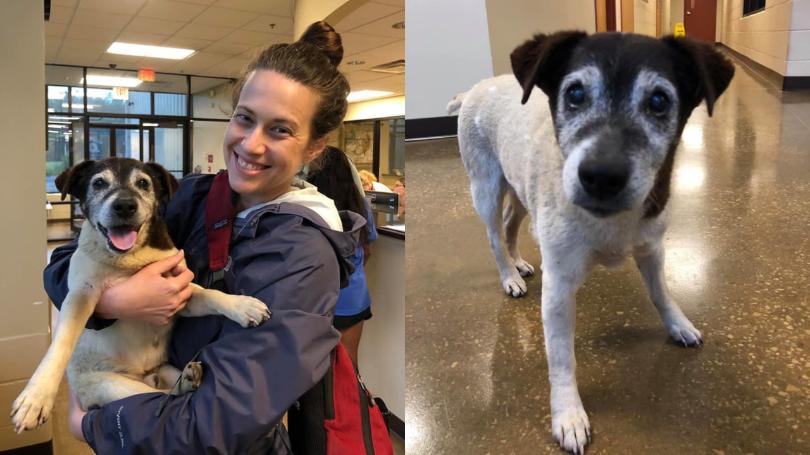 Big Time Proof That Microchipping Your Pet Pays Off
Big Time Proof That Microchipping Your Pet Pays Off
A couple who lost 2 dogs while visiting a friend years ago has one of those dogs, a deaf dog named Army, back because he was microchipped. Their advice? Microchip your pets and keep your contact information updated with the microchip company and the vet. A lot of people think it's very expensive but at most vet offices you can get your pet microchipped for $25 or less and it's there forever.
Include Pets In Disaster Evacuation Plans
With hurricane season officially underway, is your pet included in your disaster evacuation plan? Here are some things to consider: 1. Get a rescue alert sticker to place on your window in case your pets have to be left behind. The sticker will alert rescuers. 2. Choose your designated caregivers ahead of time or choose a safe haven to take your pets. You can also ask your veterinarian for a list of preferred boarding kennels and facilities. 3. Make sure you have at least 5 days of food and water for pets and humans. 4. Have leashes, collars, harnesses, garbage bags and a litter box if you have a cat, ready to go. Also include a first aid kit. 5. Keep a current photo of you and your pet in case you become separated. 6. The ASPCA strongly recommends microchipping your pet for a more permanent form of identification.
 Listen to the entire Podcast of this show (#1123)
Listen to the entire Podcast of this show (#1123)





